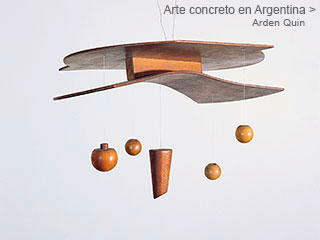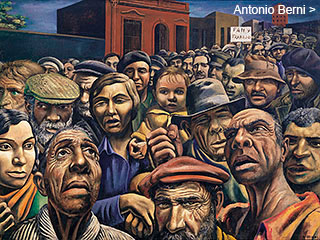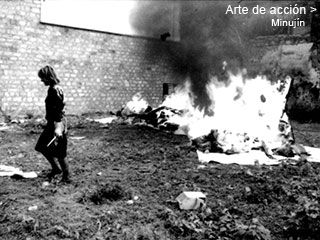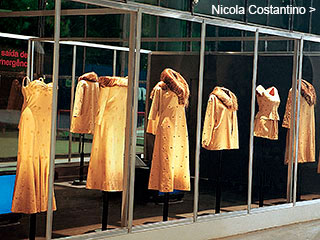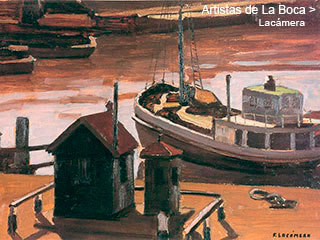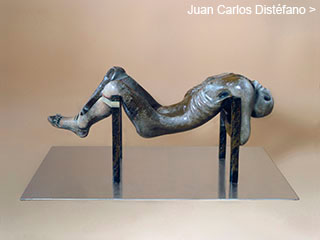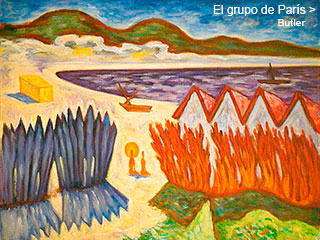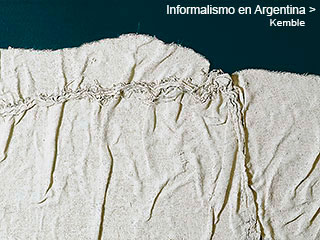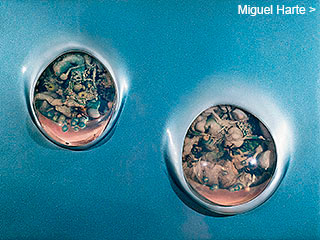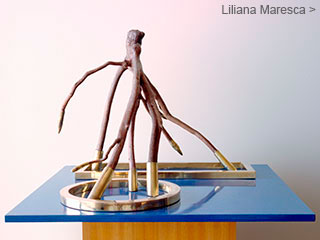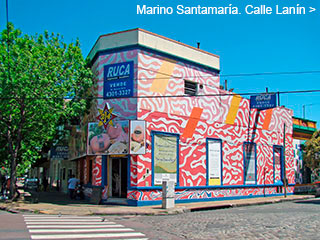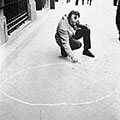Menú
Algunos dossiers
Informalism
in Argentina
in Argentina
by
Jorge López Anaya
August 2003
August 2003
Argentine Informalism incorporated processes which went against the “good taste” of the local practices. Based on the existential poetry of the time, through spontaneous gestures and the use of discarded material, it violated the limits of the traditional artistic genre and opened the road to the concept of the object, the installations and the art of action.
Greco
Magdalene doesn’t appear. A long telephone monologue with Lenti, Judas and John follows. As he suspects that I’m a homosexual he doesn’t come to sleep inside a closet in my hotel room...”
He later goes on:
“At some point a fat and kind man walks into the room with a mouth full of nails. Looking at a watch, and a bit agitated he says: take off your clothes and hurry up as I come to crucify you. The character must appear to be friendly and funny. Meanwhile, Carmelo starts taking off his clothes slowly...”
After his precipitated leave from Rome because the police had given him the il folio di via - as a result of the scandal caused at the El Laboratorio, (a small theater installed inside a garage, not too far from the Vatican area) - Greco moved to Madrid. During some time he lived in the house of the Argentine painter Adolfo Estrada. It was during this period that his friendship was born with Manuel Viola and his wife, Lucio Muñoz, Manolo Milares, Eduardo Arroyo and Antonio Saura. At this time he started a series of paintings with drawings and collages where he over imposed scriptures, generally autobiographical. It appeared that he wanted to show at the same time and in the same plane, the everyday things, his memories, his messages, all mixed in with monstrous figures and with caricatures.
more


